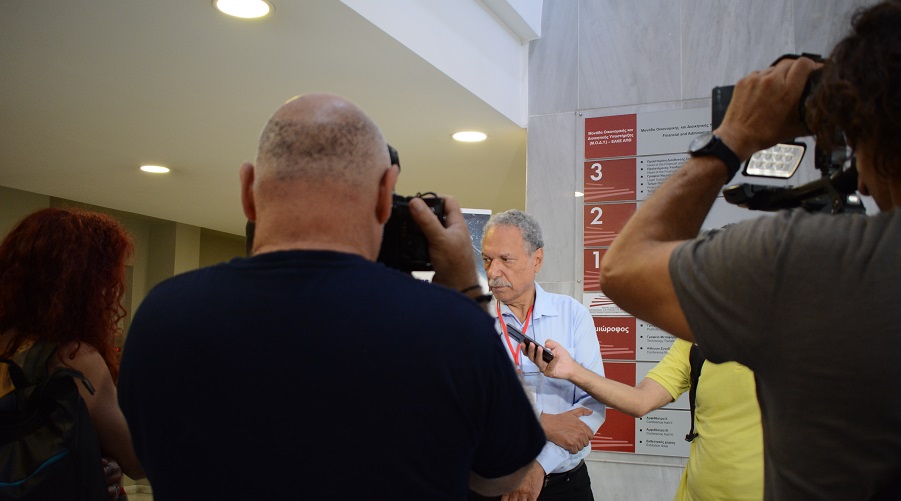
Daniel Pauly at the Aristotle University of Thessaloniki, September 2024. Photo by Valentina Ruiz-Leotaud.
In the heat of summer in central Greece, the Aristotle University of Thessaloniki hosted the 22nd FishBase and SeaLifeBase Symposium.
Titled “Fishes in Changing Ecosystems,” the two-day event started on September 2, 2024, with a full day dedicated to some of the overarching themes the Sea Around Us team is doing research on.
Besides delving into interesting topics, the goal was to honour the 25th anniversary of the Sea Around Us.
The morning session was dedicated to advances in the Gill Oxygen Limitation Theory (GOLT). Developed by Daniel Pauly in the late 1970s after assessing published data on the growth parameters of over 500 fish species in more than 1500 populations, the GOLT proposes that local conditions can influence the growth patterns of fish, but that their intrinsic growth performance is not at the mercy of such local conditions. These patterns, he showed, are determined by a major anatomical feature – the surface area of their gills.
According to this theory, gills, as two-dimensional surfaces, can’t keep up with the growth of three-dimensional bodies of fish. This constraint means that fish must work hard to extract, via their gills, the oxygen they need to grow and maintain their body functions, as even the best-aerated water contains less dissolved oxygen than the air at the top of Mount Everest. Proper understanding of this anatomical feature helps scientists better comprehend fish growth and reproduction, as well as their response to warm and deoxygenated waters resulting from climate change, among other processes.
During the GOLT session at the symposium, researchers explored a wide range of applications for this theory, from explaining the growth of sponges in warmer oceans to illuminating certain aspects of gill parasite diversification.
All of these presentations are now available on the Sea Around Us YouTube channel and can be accessed through the playlist below.

